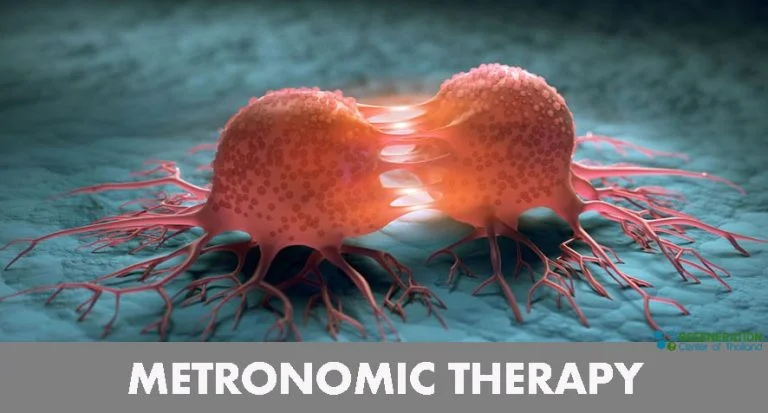
Metronomic therapy refers to the administration of low, continuous, and regular doses of certain drugs (often chemotherapeutic agents) without extended rest periods. This dosing strategy stands in contrast to the more traditional “maximum-tolerated dose” approach, where high doses of chemotherapy are given with intervening rest periods to allow for patient recovery from side effects.
However, it’s important to note that while metronomic therapy offers several potential advantages, it’s not suitable for all cancer types or all patients. The optimal dosing, choice of drug, and patient selection criteria are still areas of active research.
As always, decisions regarding cancer treatment should be made in close consultation with a knowledgeable oncologist, considering the individual patient’s type of cancer, stage, overall health, and other factors. Metronomic therapy offers an alternative salvage treatment for patients who have been heavily pre-treated relapsed/refractory multiple myeloma, kidney cancer, liver cancer, lung cancer, pancreatic cancer, and cancer of the prostate. Metronomic therapy has been shown to affect both tumor cells & tumor microenvironment to achieve therapeutic effects. Metronomic cancer therapy is also considered a lower cost dose used compared to conventional chemotherapy and NK Cell treatments.
In conventional cancer chemotherapy, a near maximum dose is administered to achieve cytotoxic effects on existing tumor cells. This approach can be successful, however, the side effects are often very significant. The Cytotoxic agents in therapies also rapidly kill all fast-dividing cells in the body, including epithelial cells, mesenchymal cells, bone marrow cells and damage to the gastrointestinal tract. Patients often need treatment breaks to allow recovery of some of the damaged functions and tissues.
In comparison, metronomic therapy, uses lower dosages (one-tenth to one-third ) of standard dose. This allows more frequent sessions using low concentrations of the medications in the blood plasma. Metronomic therapy medications are commonly given in oral form and is cheaper compared with intravenous injections used in conventional chemotherapy. At a low concentrations, the metronomic drugs primarily act on the tumor microenvironment, immune cells & tumor endothelial cells. Since patients need lower dosages the risk of having adverse side effects is often much lower.
Zombie cells, also called senescent cells, are non-dividing cells that accumulate in the body due to stress or damage, resisting… Read More
Chimeric antigen receptor-T cell treatment (CAR-T cell therapy) holds immense potential to revolutionize organ transplantation, particularly for patients who struggle… Read More
In the ever-evolving landscape of nutrition science, the discourse around dietary fats has undergone significant transformation. The Regeneration Center is… Read More
New research shows that specific types of brain cells become active after brain injuries and exhibit properties similar to those… Read More
Chemokines, critical components in the immune system, are small proteins that facilitate the migration and positioning of immune cells throughout… Read More
Stem cell research examines everything from gene expression to differentiation capacities to therapeutic potentials. With such diverse data types and… Read More